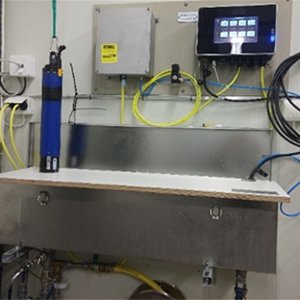Improve the cleaning of drinking water with optical sensors in more waterworks

Optical sensors are very valuable tools for process optimization or detecting deviations in the process. Site-specific calibration in combination with semi-automatic signal processing aids process control thus remedying possible negative effects caused by changes in water quality.
Within the last 4 years, the project Genomljusning collected experiences on the use of optical sensors for improved operation of five different waterworks. A large number of models for estimating the content of natural organic matter based on sensor data in different types of raw and process water were developed.
During the project, a large number of methods for semi-automated data processing have been developed that allow waterworks to link process variables to changes in both content and character of the natural organic matter. All algorithms for data processing are freely available and can be easily adapted to different sites. These tools can provide support for climate adaptation and a more sustainable drinking water sector as a whole.
The results are described in the final report from the project Genomljusning (Optiska sensorer inom dricksvattenberedning. Erfarenheter från SVU-projektet Genomljusning). The report is written in Swedish but with an English summary.
Links:
Köhler S.J., Cascone C. and Murphy K. (2021). Optiska sensorer inom dricksvattenberedning. Erfarenheter från SVU-projektet Genomljusning. SVU-rapport 2021-25. Stockholm, Svenskt Vatten. In Swedish but with an English summary.
Cascone, C., Murphy, K. R. , Markensten, H. , Kern, J. S. , Schleich, C. , Keucken, A. and Köhler, S. J. 2022. AbspectroscoPY, a Python toolbox for absorbance-based sensor data in water quality monitoring, Environ. Sci.: Water Res. Technol., 2022, 8, 836-848
SLU news : How can we ensure an efficient production of drinking water of good quality?